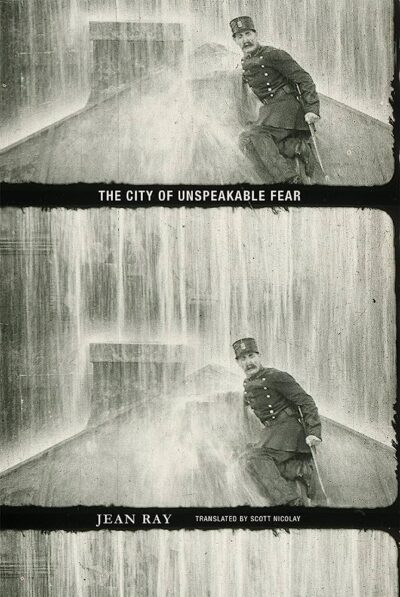 By JEAN RAY (Wakefield Press; 1943/2023)
By JEAN RAY (Wakefield Press; 1943/2023)
A rare example of a novel by Belgium’s Jean Ray (who specialized in short stories), and an even rarer example of a translation of Ray’s work (whose publications number in the thousands, only a dozen or so examples of which are available in English). THE CITY OF UNSPEAKABLE FEAR isn’t in the same league as Ray’s other major novel length manuscript MALPERTUIS; that novel was assuredly one of the Twentieth Century’s strangest and most distinct works of dark fantasy, whereas CITY is a fairly conventional (by 1940s European standards, at least) potboiler. Nonetheless, Ray’s authorial voice, with its frank and unaffected prose, nonchalant acceptance of the supernatural and audacious genre-mixing—it reads, by turns, like a Lovecraftian horror story, a whodunnit and a parody of both—is always fascinating.
The highly evocative opening chapter makes a compelling case for the horror label. Described is “The Great Fear” that overshadowed England’s history, manifested in an uncanny vision by Geoffrey Chaucer, the alleged 1610 manifestation of the ghost of Queen Anne Bolyn and other chilling “true” events, leading to the question “Did the terror, citizen by right of England’s towns and villages, take shape in Ingersham, to tug there, with its hideous hands of mist, on the strings of human puppets?” Ingersham, for the record, is a small English community, described as “looking more like a village in Flanders than a town in Middlesex or Surrey” (Ray, according to an afterward by this novel’s translator Scott Nicolay, never actually set foot in England but was obsessed with the country).
Ingersham is beset by a rash of apparently supernatural manifestations that leave numerous corpses in their wake. Enter Sidney Terence Trigs, a retired traffic cop who originated in Ingersham, and who, upon returning to his hometown, is mistaken by the townspeople for a decorated police inspector. Thus, Triggs becomes a “detective in spite of himself,” although his conclusions about the apparent ghosts haunting Ingersham are inaccurate, with the last-minute intercession of a real detective, one Humphrey Basket, required to fully explain what’s been occurring. Mr. Basket, incidentally, is but one of many interesting character names to be found in these pages, as there’s also Gregory Cobwell, Suzan Summerlee, Molly Snugg and Florence Honnybingle, a highly colorful, Dickensian bunch caught up in the madness engulfing Ingersham.
I’m at odds with “Scooby Doo” endings in which what appeared to be supernatural phenomena is revealed to be the work of entirely natural machinations. THE CITY OF UNSPEAKABLE FEAR, unfortunately, has one of those endings, although the final chapter adds an extra wrinkle to the “is-it-or-isn’t-it” conundrum that closes the book out on a memorably chilly note.
